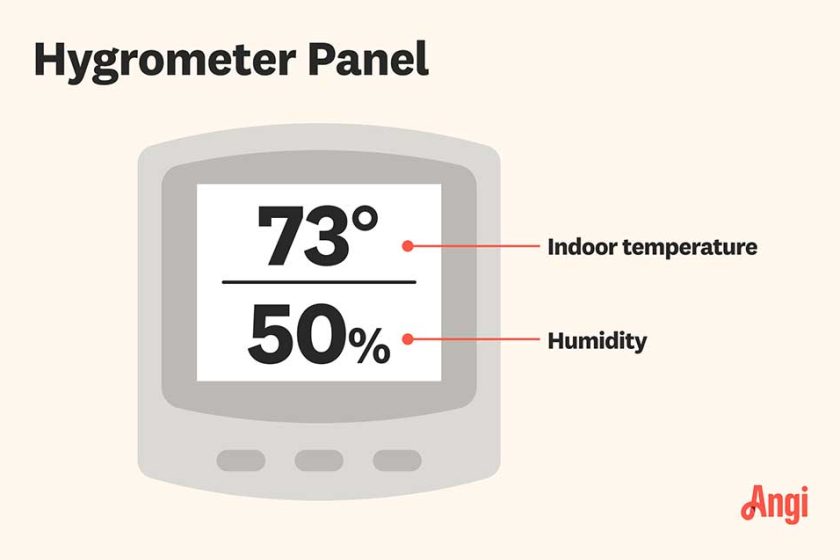Contents
Basements are often overlooked when it comes to home maintenance, yet they play a crucial role in the overall health of your home environment. High humidity levels in basements can lead to a range of problems, including mold growth, structural damage, and unpleasant odors.
Measuring and managing basement humidity levels is essential not only for preserving your home but also for ensuring a safe and healthy living space. Many homeowners may not realize that an excessively humid basement can contribute to respiratory issues and other health concerns.
In this article, we will explore the step-by-step process of measuring basement humidity levels and provide actionable tips to maintain an optimal environment.
Why Measuring Basement Humidity Matters
Understanding and controlling humidity levels in your basement is crucial for several reasons. High humidity can be detrimental to your health and your home, leading to issues like mold, mildew, and even pest infestations. Here’s why it’s important to keep an eye on humidity levels:
Mold Growth – The Health Risks of High Humidity
Excess moisture in your basement creates the perfect breeding ground for mold spores. Mold can trigger allergic reactions, respiratory problems, and other health issues, particularly for individuals with asthma or weakened immune systems. Regularly measuring humidity levels can help you catch these issues before they escalate.
A humidity level above 60% is considered problematic for mold growth. It’s crucial to maintain levels between 30% and 50% to prevent these health risks. Utilize dehumidifiers if necessary to keep humidity in check.
Structural Integrity – Protecting Your Home Investment
High humidity can compromise the structural integrity of your basement, leading to damage over time. Wood can warp, and concrete can crack, resulting in costly repairs. Keeping humidity levels stable helps maintain a dry environment that protects your home’s foundation. Monitoring humidity levels can save you money in the long run by preventing serious damage.
Consider using moisture barriers and insulation on basement walls to help regulate humidity. Regular checks can alert you to potential issues, allowing for timely intervention.
Tools for Measuring Basement Humidity
Before you can manage humidity effectively, you need the right tools to measure it. Here are some essential instruments and techniques for accurately gauging humidity levels in your basement.
Hygrometers – The Essential Tool for Humidity Measurement
A hygrometer is an instrument specifically designed to measure humidity levels. Digital hygrometers are easy to read and often provide additional features such as temperature readings. When selecting a hygrometer, look for one that is reliable and has a range suitable for basement conditions. Invest in a quality hygrometer to ensure accurate readings.
Place your hygrometer in various locations throughout your basement to get a comprehensive understanding of your humidity levels. It’s a good idea to check readings at different times of the day to account for variations.
DIY Methods – Simple Techniques to Gauge Humidity
If you’re looking for a quick, no-cost method to estimate humidity, the “glass test” can be effective. Simply fill a glass with ice water and let it sit for a few minutes. If condensation forms on the outside of the glass, your basement humidity is likely too high. This method won’t give you precise numbers but can serve as a temporary measure until you obtain a hygrometer. Use this test as a quick reference but not as a replacement for measurement tools.
Keep in mind that this method is subjective and should only be used in conjunction with more reliable tools for accuracy.
Managing Basement Humidity Levels
Once you’ve measured your basement humidity levels, the next step is managing them effectively. Here are several strategies to help you keep your basement dry and healthy.
Dehumidifiers – The Go-To Solution for Humidity Control
Dehumidifiers are one of the most effective tools for reducing humidity levels. These devices work by extracting moisture from the air, making your basement a more comfortable and healthier space. When choosing a dehumidifier, consider the size of your basement and the unit’s capacity. Regularly empty and maintain your dehumidifier to ensure optimal performance.
Set your dehumidifier to maintain humidity levels between 30% and 50% for the best results. This will not only help prevent mold growth but also improve air quality in your basement.
Ventilation – Creating a Breathable Basement Environment
Proper ventilation is key to managing humidity levels effectively. Ensure that your basement has adequate airflow by opening windows when weather permits or using exhaust fans. Ventilating your basement helps to expel moist air and bring in drier air from outside. Installing vents or fans can significantly improve air circulation.
Consider using a mechanical ventilation system if natural ventilation is not feasible. This system can help maintain balanced humidity levels year-round, especially during humid seasons.
Waterproofing – Preventing Moisture Intrusion
Investing in waterproofing measures can greatly enhance your basement’s resistance to moisture. This includes sealing cracks in walls and floors, applying waterproof paint, and installing sump pumps if necessary. Waterproofing not only protects your basement from rising groundwater but also helps maintain stable humidity levels. Regular maintenance of these measures can prevent water intrusion.
Inspect your basement regularly for signs of leaks or water damage and address issues immediately to prevent future humidity problems.
Measuring and managing basement humidity levels is crucial for ensuring a safe, healthy home environment. By understanding the importance of humidity control, utilizing the right measurement tools, and implementing effective management strategies, you can protect your home from mold, structural damage, and health risks. Regular monitoring and maintenance can save you time and money in the long run, leading to a more comfortable and functional basement space.

